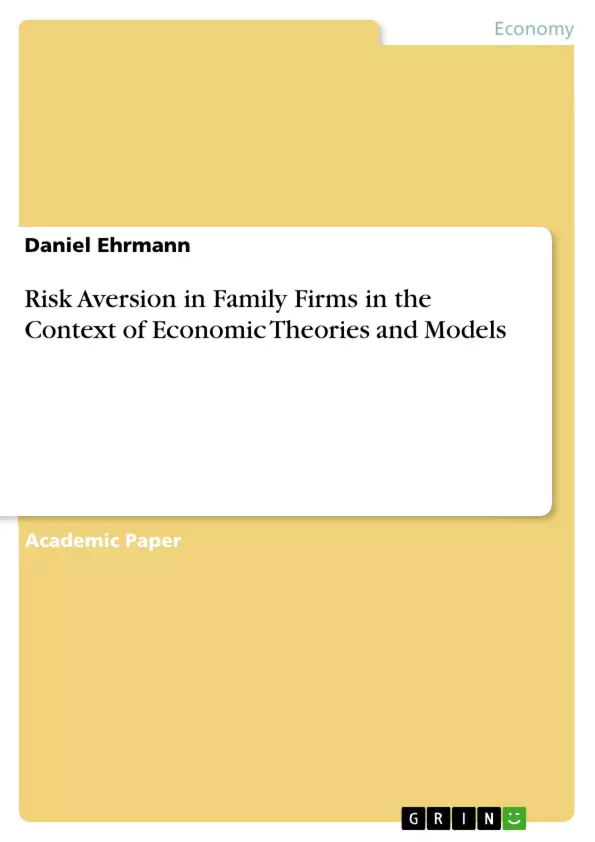This paper examines the risk willingness respectively aversion of family businesses in the context of various economic theories and models, in particular on the basis of New Institutional Economics. The results and evidence of other scientific studies are compiled and condensed by means of a systematic literature review.
Especially the topic of risk aversion is very interesting when talking about family firms. It could be assumed that family firms were more risk averse than non-family firms because of the accumulation of the families´ wealth in the firm. This was in line with agency theory. This assumption, while generally understandable, is highly questioned due to recent research. Risk aversion may be situational and depending on the circumstances of the family firm.
Inhaltsverzeichnis (Table of Contents)
- 1 INTRODUCTION
- 2 THEORETICAL FOUNDATIONS
- 2.1 FAMILY FIRMS AND RISK
- 2.2 FAMILY FIRM BEHAVIOUR
- 3 SYSTEMATIC LITERATURE REVIEW
- 3.1 METHODICAL APPROACH
- 3.2 ARTICLE CHARACTERISTICS
- 4 FINDINGS
- 4.1 THEORETICAL APPROACH TOWARDS THE RISK AVERSION IN FAMILY FIRMS
- 4.2 FACTORS INFLUENCING THE RISK AVERSION IN FAMILY FIRMS
- 4.3 EFFECTS OF THE RISK AVERSION IN FAMILY FIRMS
- 5 CONCLUSION
Zielsetzung und Themenschwerpunkte (Objectives and Key Themes)
This paper aims to investigate risk aversion in family firms and answer the question of whether they are more risk-averse than non-family firms. It examines different types of business risks faced by family firms, identifies factors influencing their risk aversion, and explores the potential effects of such aversion. The paper uses a systematic literature review (SLR) to collate existing research on the topic and provide a comprehensive overview.
- Risk aversion in family firms
- Factors influencing risk aversion in family firms
- Effects of risk aversion in family firms
- Comparison of family firms to non-family firms
- Different types of business risks
Zusammenfassung der Kapitel (Chapter Summaries)
The paper begins by introducing the prevalence of family firms in the global economy and highlights the ongoing research surrounding their unique characteristics. The theoretical foundations chapter explores the complexities of defining family firms and examines the role of ownership, management, and family influence. It further distinguishes between different types of family firms based on family involvement and introduces the concept of risk, differentiating between performance hazard risk and venturing risk. The chapter emphasizes the importance of understanding family firm behavior and its potential deviation from non-family firm behavior in terms of risk-taking.
The systematic literature review section outlines the methodological approach and criteria used to select relevant articles. The findings section delves into the theoretical approaches towards risk aversion in family firms, analyzing factors influencing this aversion and exploring its effects on firm performance and decision-making. This section collates findings from various research studies, providing insights into the dynamics of risk aversion within the context of family firms.
Schlüsselwörter (Keywords)
The main keywords and focus topics of this work include family firms, risk aversion, business risks, family firm behavior, agency theory, stewardship theory, systematic literature review, and comparative analysis. This study examines the relationship between family involvement and risk-taking behavior, shedding light on the nuances of governance and decision-making in family firms.
- Quote paper
- Daniel Ehrmann (Author), 2017, Risk Aversion in Family Firms in the Context of Economic Theories and Models, Munich, GRIN Verlag, https://www.grin.com/document/888883




